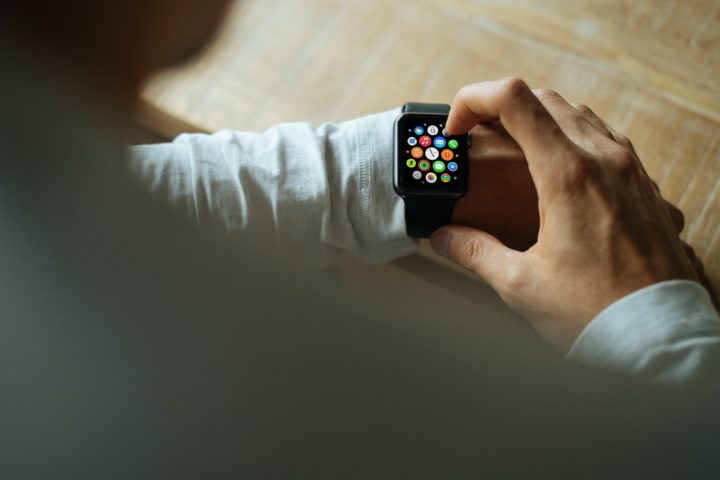The following contribution is from another author.
The case for smartwatches wasn’t evident just a few years ago. Today, there is a plethora of high-quality wearable devices to select from, and a few prominent players have pushed their way to the head of the pack. It’s shaping up to be an amazing year to buy a smartwatch, with Apple offering terrific options with a wider price range than ever before, as well as healthy competition from Samsung.
This year we will likely witness the results of Google’s $2.1 billion acquisition of Fitbit, which was revealed in late 2019 and closed in January 2021. Meanwhile, hybrid watchmaker Withings is growing in popularity, the Fossil group offers a large selection across its numerous brands, and the Swiss have several high-end options too.
Smartwatches are useful devices that can track your heart rate, count your steps, indicate the time, and much more. That being said, there are currently plenty on the market making the decision about which one is appropriate for you to be difficult.
Still, some people ask if smartwatches are worthwhile. If you’re reading this, you’ve probably already concluded that the answer is yes. Even if the market has virtually eliminated the also-rans, the devices that remain are not all created equal. We’re here to assist you in determining the features to consider when looking for the best smartwatch for you. This smartwatch buying guide was created to make your decision a bit easier.
A Fitness Band or a Smartwatch?
Devices occasionally straddle the boundary between fitness bands and smartwatches. Both are guilty of emulating the attributes of the other in order to create a more functional device. In an ideal world, a fitness band would cater to people who are more health-conscious and want to incorporate exercise and physical activities into their daily routine. As a result, fitness bands might be less fashionable but more robust, and smartwatch functionalities can be omitted.
A smartwatch may keep track of some health-related data, but its main purpose is to serve as the interface for your phone on your wrist. It’s a good idea to figure out what you’re looking for right now. If you are stuck between the two, you might be able to discover a product that serves both purposes. If you are looking for one here are the best places to buy a Refurbished Apple Watch.
Is the Watch’s Operating System Compatible with Your Phone?
When purchasing a smartwatch, the operating system requirement is the most important consideration. Fortunately, the choice is simple because it is partially determined by the smartphone you own. Get an Android smartwatch if you own an Android phone. If you have an Apple iPhone, you should acquire an OS smartwatch. But what if you’re interested in trying out a new phone? Well then, you have a lot of options to look through.
But in the end, you must choose between an Apple Watch and an Android Watch. This isn’t a simple decision. Apple products are, after all, fantastic. However, because Android is less proprietary, there are a lot more watch options (pretty much all other smartwatches run on Android).
If it helps you make your decision, I prefer Android over Apple. I’ve always preferred Samsung phones, so when I first started purchasing smartwatches, they were all Android Wear.
Samsung Gear (Tizen) vs. Android Wear
If you’re leaning toward Android, you’ll have to choose between Android Wear and Samsung Gear (Tizen Operating System). Android Wear is wonderful because it has a lot of apps and is used by a lot of watch companies. Overall, I like the Samsung Gear S3 watches’ operating system since it is FAST and does not drain the battery as quickly.
Touchscreen vs. Touchless Displays
It would appear that choosing a touchscreen for your wearable device is a no-brainer. While it may be difficult to select things on a smaller touch screen, a few of the gesture-based functions are not instinctive.
Wear OS does an excellent job of giving card-based alerts which you can swipe off, but there is still a lot of swiping when it comes to accessing other apps and settings within apps. A wrist flick, on the other hand, can be used to switch between cards.
The Apple Watch has a hybrid design, with a digital crown on the right side as well as a side button on the left. The screen employs Force Touch, which knows the difference between a tap and a long-press, so you can effortlessly zoom in or swipe over the crown. You may access your dock of frequently used applications by pressing the side button.
The Samsung Galaxy Watch and Samsung Gear 3 both contain a rotating bezel that may be used to browse through menus. They’re employed in tandem with touchscreen capabilities.
OLED vs. LCD Display
Many smartwatches include a vibrant AMOLED or LCD which allows you to view apps, images, and other content in vibrant color, giving the impression of being brighter. The trade-off is lower battery life, however, smartwatch manufacturers are working to improve the devices’ functionality. These can last a few days, if not weeks, but you’ll want to opt with a black-and-white display if you want the greatest battery life. Rather than LCD panels, which allow for thinner designs, more expensive smartwatches have sharp OLED displays.
Fitness, Music, Mobile Payment, and Other Features
Tracking your fitness
People buy smartwatches for a variety of reasons, including tracking activity. Most modern wearables include a heart rate monitor and track your calories, steps, and exercises.
Many smartwatches include GPS which can be useful for tracking runs and bike rides. Swimmers will want one that can handle being submerged in water. Fortunately, most or all devices can now survive at least a dunk in the pool.
Some smartwatches, such as those from Garmin, are more fitness-oriented than others, with capabilities such as heart-rate variability tracking, auto-exercise recognition, recovery time estimation, onboard maps, and more.
Most smartwatches have also improved their health tracking capabilities in recent years. Apple and Fitbit devices can calculate blood oxygen levels, and the Apple Watch can even take ECG readings. However, the more affordable a wristwatch is, the less likely it is to offer advanced health tracking functions like those; if you want to collect that kind of data, you’ll have to pay more.
Music
The ability to control your music from your smartwatch is one of the most popular functionalities. Assuming the gadget can pair with Bluetooth speakers, you will then be able to control everything from your watch. While this is a valuable feature, it is not available on all smartwatches.
Wireless technology with NFC
Many smartwatches contain NFC (Near Field Communication), which allows you to pay for products without taking out your wallet. After storing your credit or debit card credentials, you may use your smartwatch to pay for a cup of coffee on your way home from a run by holding it up to an NFC scanner. Please remember that separate payment systems are used by different watches: Apple Watches use Apple Pay, Samsung devices use Samsung Pay, Wear OS devices use Google Pay, and so on. Fitbit and Garmin offer their own versions called dubbed Fitbit Pay and Garmin Pay respectively.
Capability to make and receive calls and texts
If you’re looking to buy a smartwatch, you’ll want to make sure it’s as functional as possible. Cellular connectivity is an example of advanced capability; you may use it to make calls and send texts. The way this feature works will be determined by the smartwatch you have. Most, for instance, will allow you to view notifications and texts. Some smartwatches will allow you to send a quick reply. Others will only let you respond using your phone.
Charging time and battery life
Most smartwatches with color screens now last a few days, if not weeks, between charges (but in some cases, less than one day), so think about how often you’re likely to charge your watch. When used as phones, watches with speaking features won’t last nearly as long, but that’s to be expected. On a single charge, the Apple Watch lasts around 18 hours of mixed-use.
Wireless charging is used by most smartwatches, including that of the Apple Watch and Samsung Gear Sport, which is handy because you don’t have to put your gadget into a charger; instead, you put it flat on a charging puck.
Design and style
If you’re planning to wear your smartwatch all day, it should be fashionable and functional. There are many different smartwatch designs to pick from. You can choose between a digital or analog design, for instance. You could also be able to modify the band or frame’s color. You might even be able to customize the display design if you choose a digital model.
Before you buy a smartwatch, you can customize it in a variety of ways. Android Wear devices combine the elegance of an analog watch with the functionalities of Google’s watch OS. Classic watchmakers are now joining the party with their fashion-forward watches, Movado, Emporio Armani, Tag Heuer. Even Louis Vuitton has jumped on the smartwatch bandwagon, giving consumers a luxurious option to technology.
Pricing
Usually, smartwatches will cost between $100 for older models and around $1,600 for the Tag Heuer Connected, with the exception of inexpensive gadgets from no-name companies. Most smartwatches cost between $200 and $500 depending on functionalities and accessories.
The Apple Watch Series 5 begins at $399 for a base aluminum case and silicone band with no built-in GPS, while the ceramic casing and designer versions cost more than $1,399 each. If you’re on a budget but still want the smartwatch from Apple, you can go for the refurbished ones.
You’ll have to figure out what mix of form and functionality is most cost-effective for you.
Final Words
Hopefully, these recommendations will assist you in selecting the perfect smartwatch. Hopefully, you have a good time and are ready to take the next important step forward. Smartwatches may have been science fiction a decade ago, but now they’re a reality.
















